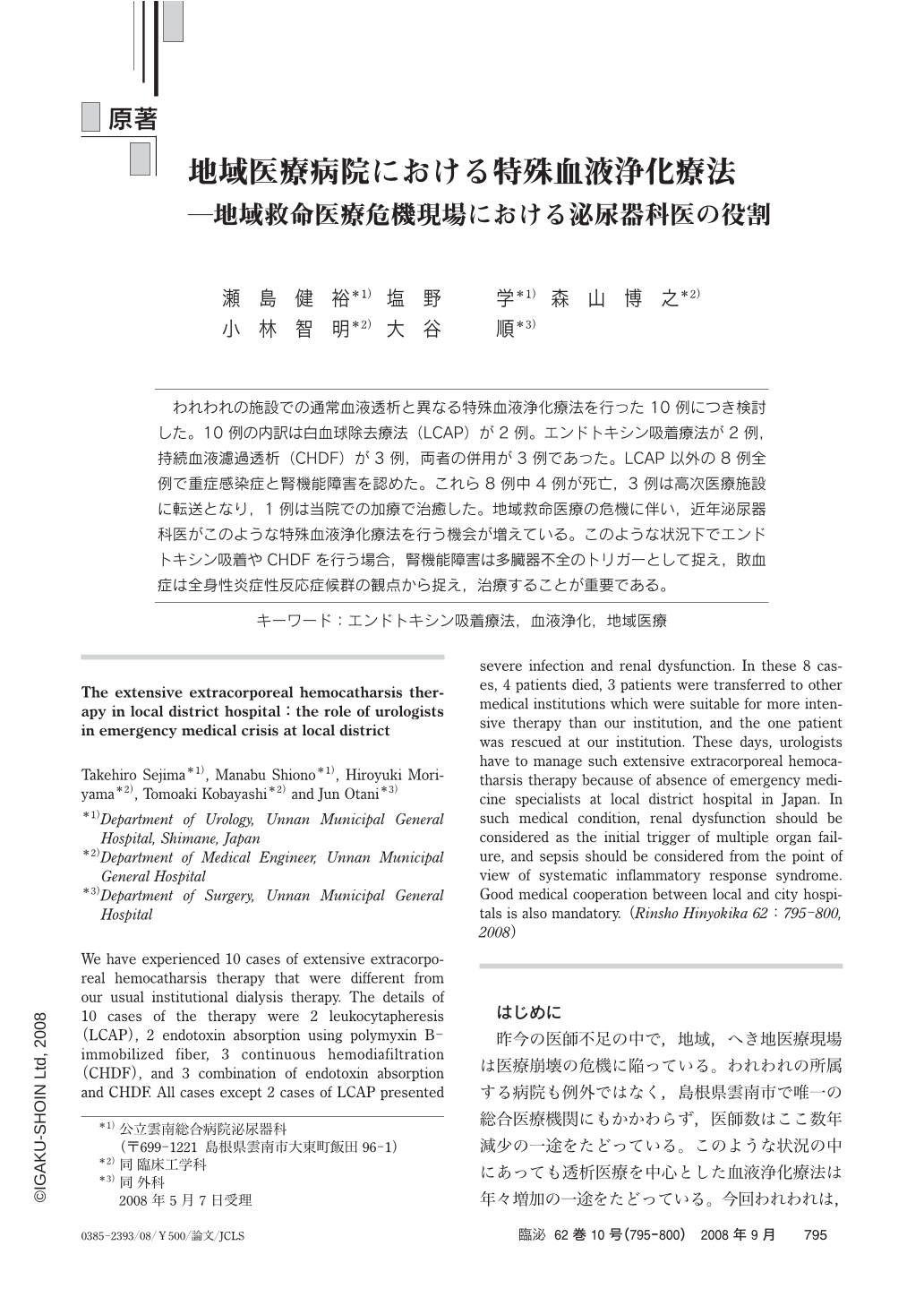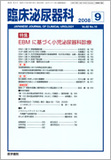Japanese
English
- 有料閲覧
- Abstract 文献概要
- 1ページ目 Look Inside
- 参考文献 Reference
われわれの施設での通常血液透析と異なる特殊血液浄化療法を行った10例につき検討した。10例の内訳は白血球除去療法(LCAP)が2例。エンドトキシン吸着療法が2例,持続血液濾過透析(CHDF)が3例,両者の併用が3例であった。LCAP以外の8例全例で重症感染症と腎機能障害を認めた。これら8例中4例が死亡,3例は高次医療施設に転送となり,1例は当院での加療で治癒した。地域救命医療の危機に伴い,近年泌尿器科医がこのような特殊血液浄化療法を行う機会が増えている。このような状況下でエンドトキシン吸着やCHDFを行う場合,腎機能障害は多臓器不全のトリガーとして捉え,敗血症は全身性炎症性反応症候群の観点から捉え,治療することが重要である。
We have experienced 10 cases of extensive extracorporeal hemocatharsis therapy that were different from our usual institutional dialysis therapy. The details of 10 cases of the therapy were 2 leukocytapheresis(LCAP), 2 endotoxin absorption using polymyxin B-immobilized fiber, 3 continuous hemodiafiltration(CHDF), and 3 combination of endotoxin absorption and CHDF. All cases except 2 cases of LCAP presented severe infection and renal dysfunction. In these 8 cases, 4 patients died, 3 patients were transferred to other medical institutions which were suitable for more intensive therapy than our institution, and the one patient was rescued at our institution. These days, urologists have to manage such extensive extracorporeal hemocatharsis therapy because of absence of emergency medicine specialists at local district hospital in Japan. In such medical condition, renal dysfunction should be considered as the initial trigger of multiple organ failure, and sepsis should be considered from the point of view of systematic inflammatory response syndrome. Good medical cooperation between local and city hospitals is also mandatory.

Copyright © 2008, Igaku-Shoin Ltd. All rights reserved.


